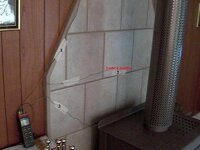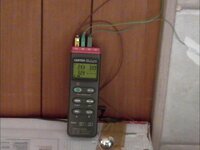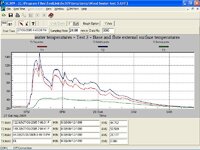Thought about it a few years ago.
Good luck with doing it. When doing a 3 or more color cast, you don't have time to fiddle around with testing temps. It all comes with practice. Different colors will gel before others...knowing this helps.
I know when I need to pour depending on the effect I want.
Mike:
I have moved down this road pretty good. If i am pouring 3 colors, that means 6 cups. Pour the first color, leave the other five uncatalized in the ultrasonic warming bath. Then at the exact time, catalyse and pour color 2 while the others remain uncatalysed. Then pour color 3, the repeat. It gets the colors the way I want, but with this much juggling, knowing the point just before the last pour starts to gel would be VALUABLE information.
There HAS TO BE A WAY!
With your process and 6 cups, the first color would be gelled before the last color was catalyzed. So why would you need to know when the last color is about to gel? It might work for you but, that would never work for me. Mine are gelled within 3 minutes of pouring. They are out of the mold within 45 minutes of pouring. Knowing the temp. would be useless for me.
A single color cast is NOTHING like a multi-color cast.
A single color can be mixed and poured... nothing to worry about wasting. No timing, no need to know a temp., or when it will gel.
Everyone has a different path to get to the same destination, some paths are just shorter.




